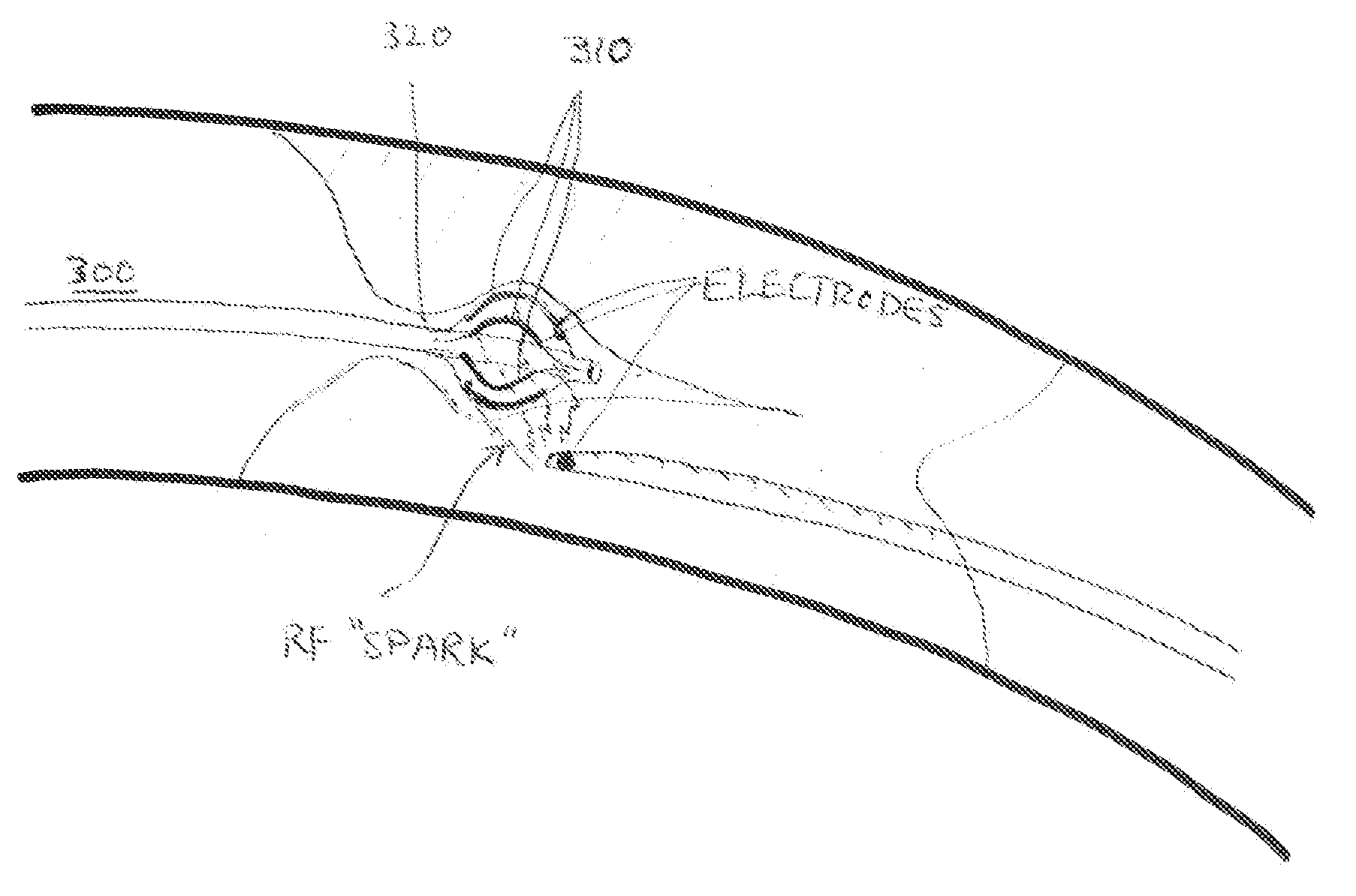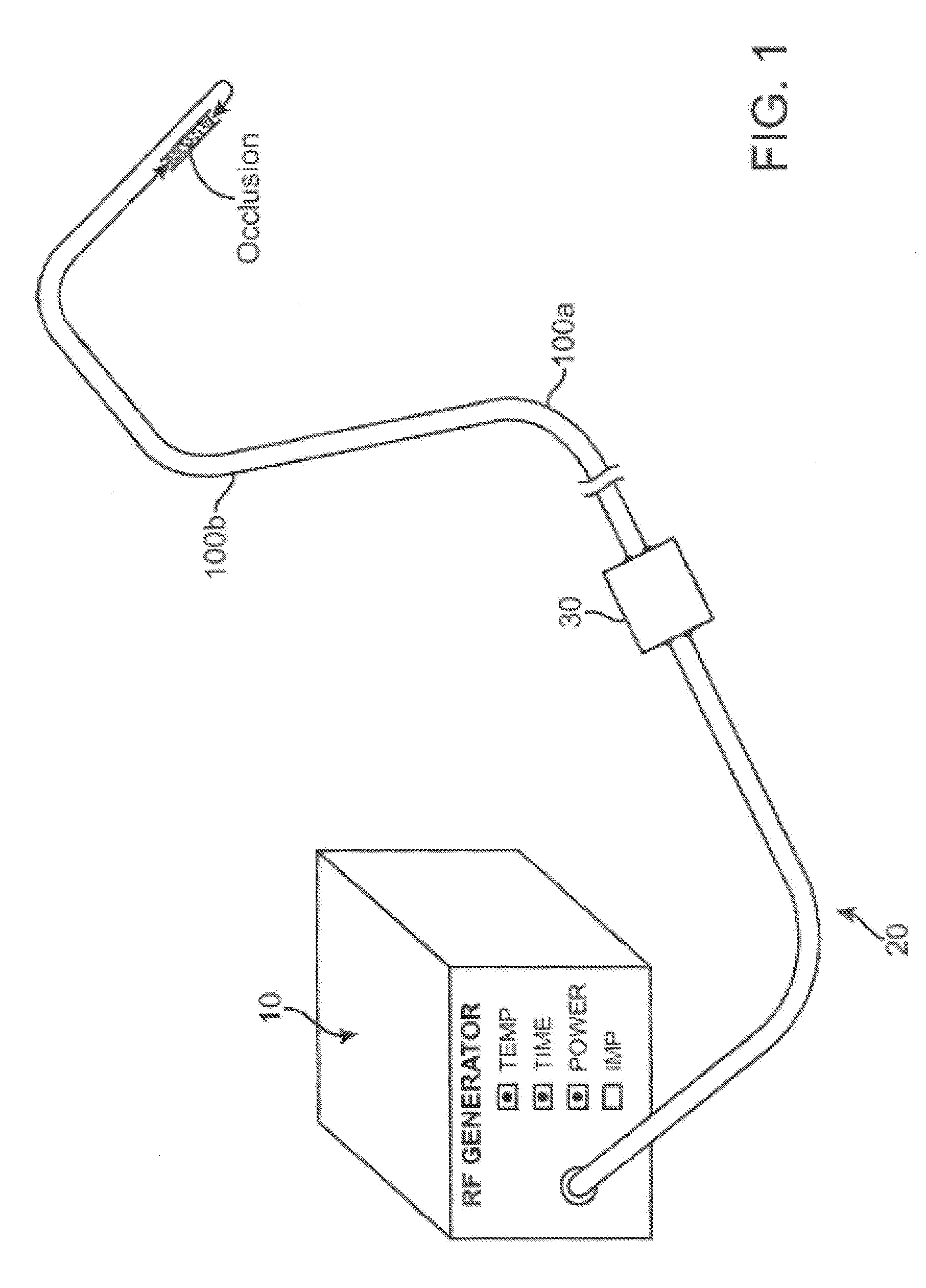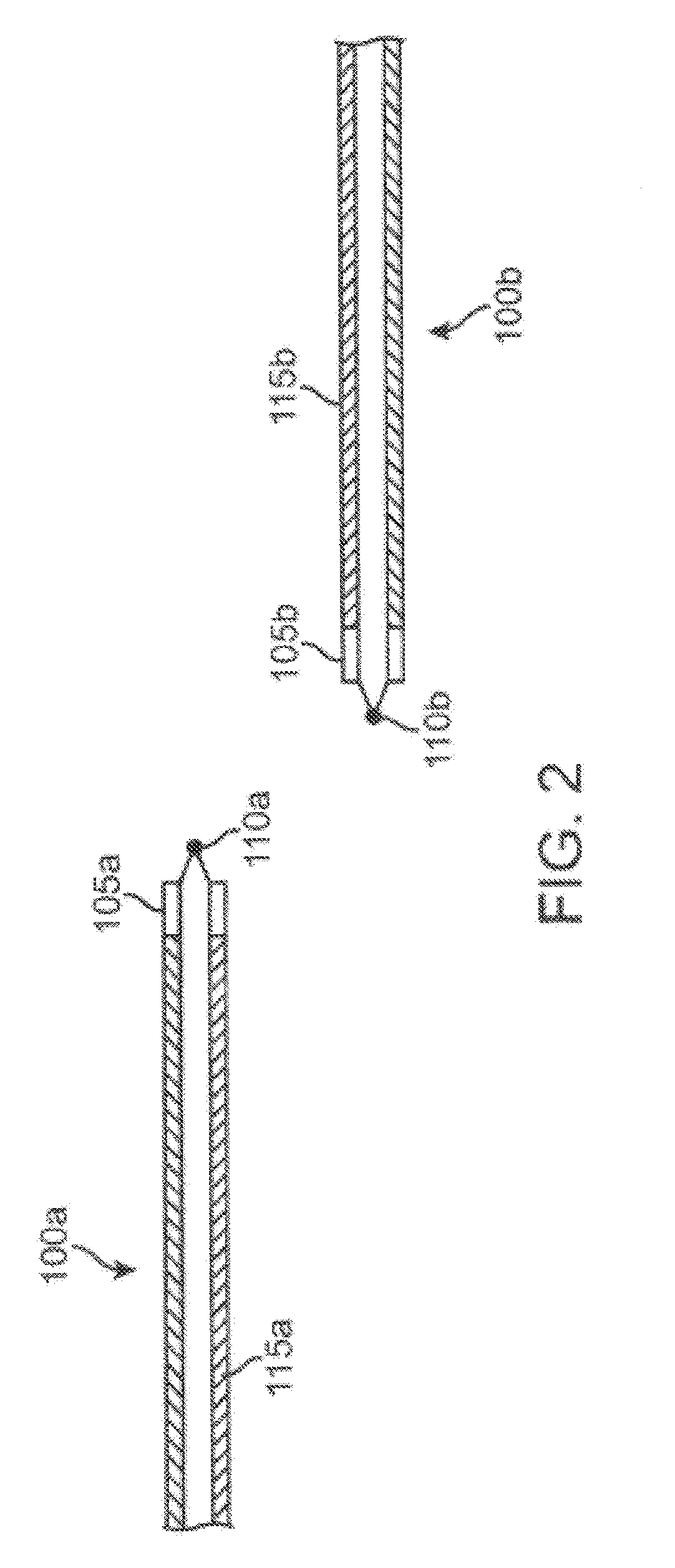Recanalizing occluded vessels using radiofrequency energy
a radiofrequency energy and occlusion technology, applied in the field of lumen occlusion, can solve the problems of inability to successfully pass a guidewire, percutaneous coronary intervention, and complete blockage of the vessel,
- Summary
- Abstract
- Description
- Claims
- Application Information
AI Technical Summary
Benefits of technology
Problems solved by technology
Method used
Image
Examples
Embodiment Construction
[0024]Although the detailed description contains many specifics, these should not be construed as limiting the scope of the invention but merely as illustrating different examples and aspects of the invention. It should be appreciated that the scope of the invention includes other embodiments not discussed in detail above. Various other modifications, changes and variations which will be apparent to those skilled in the art may be made in the arrangement, operation and details of the method and apparatus of the present invention disclosed herein without departing from the spirit and scope of the invention as described here.
[0025]The present embodiments combine the use of RF energy delivered through antegrade and retrograde members for recanalizing occluded lumens, particularly chronic total occlusions. The methods and systems described herein recanalize difficult to cross occlusions by taking advantage of an antegrade and retrograde approach to establish a bipolar electrode arrangem...
PUM
 Login to View More
Login to View More Abstract
Description
Claims
Application Information
 Login to View More
Login to View More - R&D
- Intellectual Property
- Life Sciences
- Materials
- Tech Scout
- Unparalleled Data Quality
- Higher Quality Content
- 60% Fewer Hallucinations
Browse by: Latest US Patents, China's latest patents, Technical Efficacy Thesaurus, Application Domain, Technology Topic, Popular Technical Reports.
© 2025 PatSnap. All rights reserved.Legal|Privacy policy|Modern Slavery Act Transparency Statement|Sitemap|About US| Contact US: help@patsnap.com



